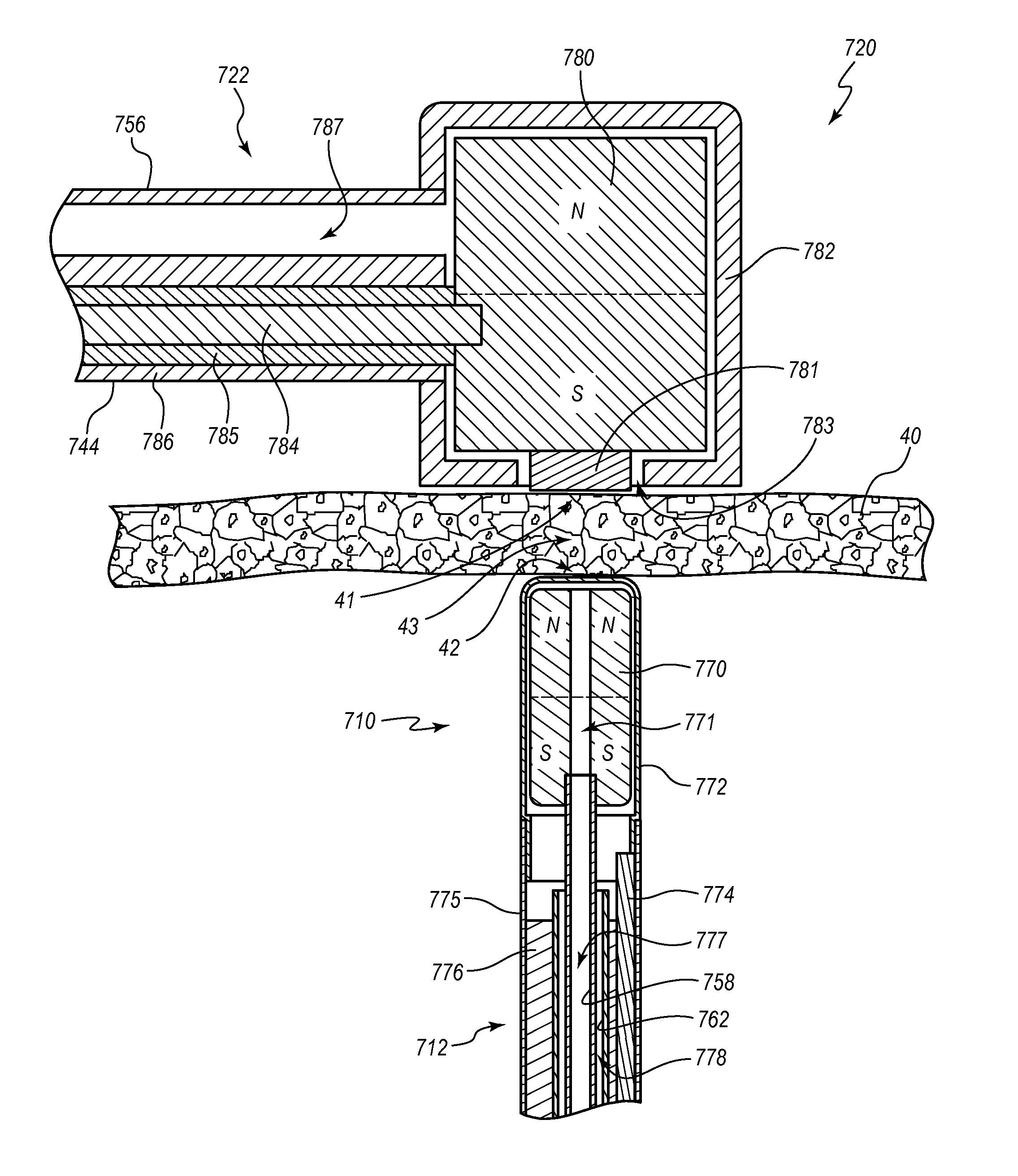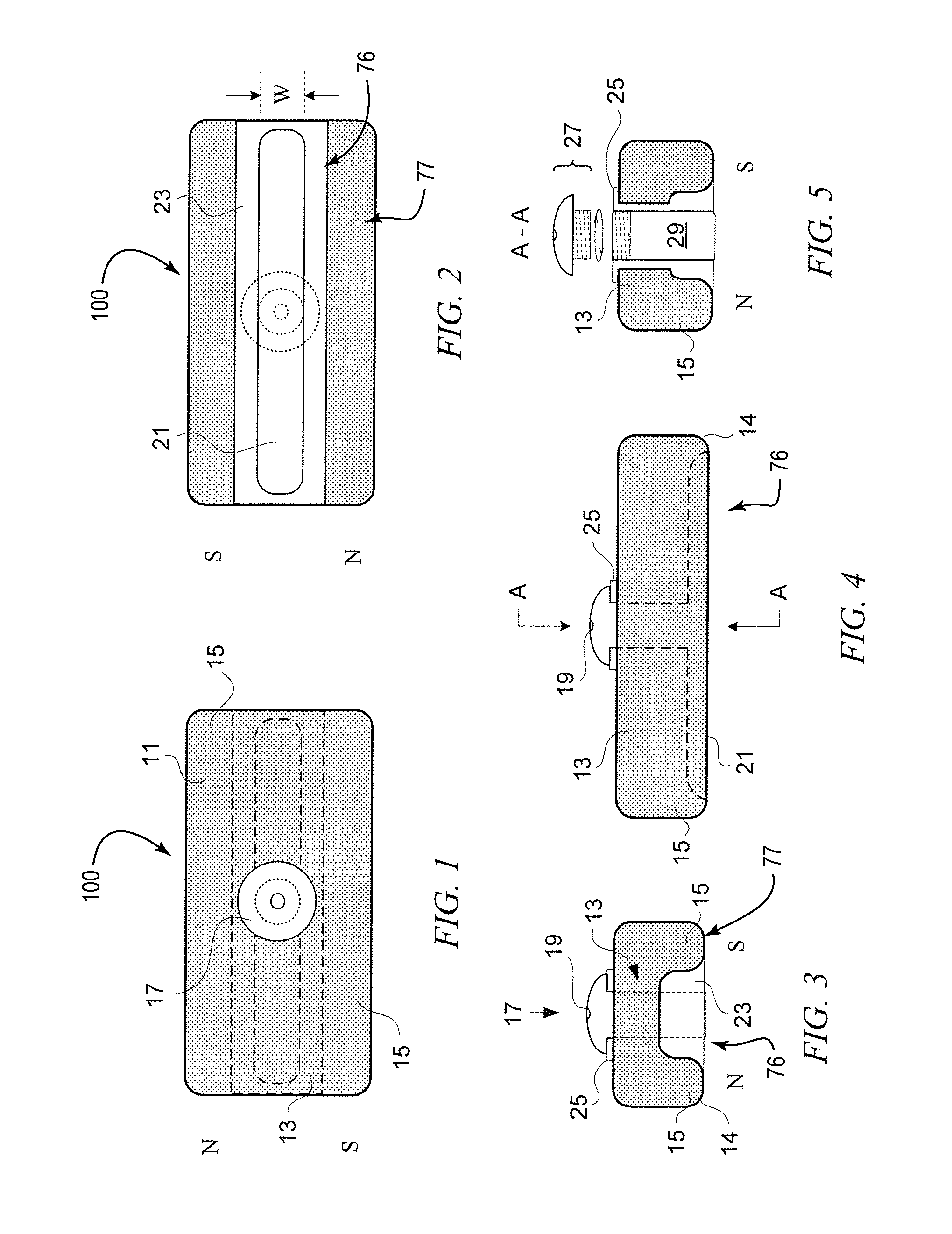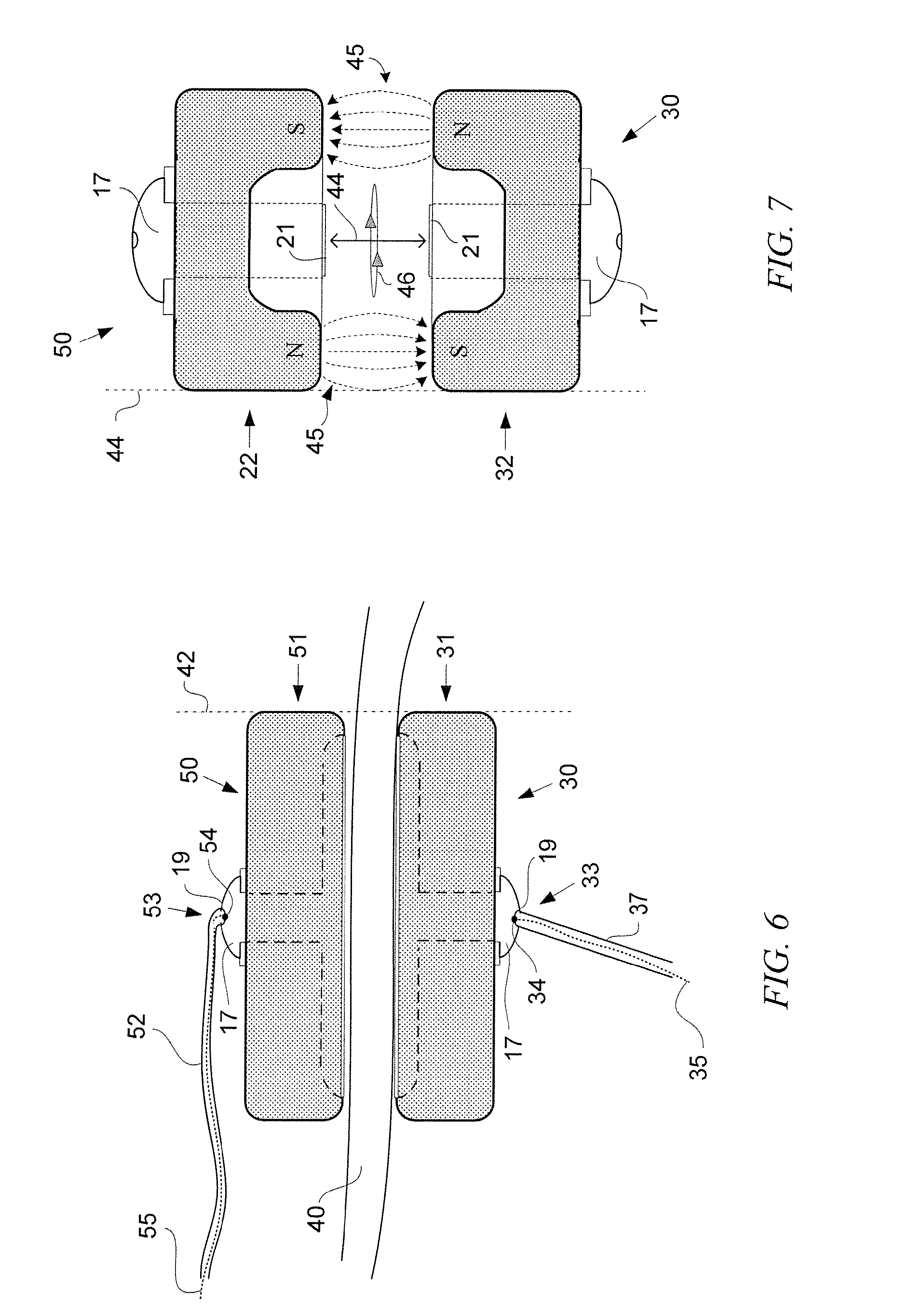Magnetically coupling devices for mapping and/or ablating
a technology of magnetic coupling and mapping, applied in the field of surgical ablation, can solve the problems of significant stroke, disability, death, and significant risk of cox-maze iii complications, and achieve the effects of improving the efficacy of surgical and interventional vascular treatment, being more reliable and/or less invasiv
- Summary
- Abstract
- Description
- Claims
- Application Information
AI Technical Summary
Benefits of technology
Problems solved by technology
Method used
Image
Examples
Embodiment Construction
[0047]The following disclosure presents various embodiments for providing automatically aligning bipolar electrodes on opposing sides of operative tissue. Certain embodiments can improve precision and efficacy of transmural ablation in the treatment of AF, and thus this particular context is discussed, although the embodiments are not necessarily limited to any specific procedure or context. The apparatus and methods disclosed herein may be applied to any surgical procedure that can benefit from precision alignment of two or more transmitting elements across a tissue mass, such as for the purpose of scoping, suturing, burning, cutting, freezing, excising, electrically mapping, or otherwise treating or interacting with the tissue. Applications of various embodiments include, but are not limited to, endometrial ablation, tumor ablation, treatment of WPW syndrome, observation or measurement of electrical properties of tissue, and placement of catheters, pacemakers, imaging devices, bio...
PUM
 Login to View More
Login to View More Abstract
Description
Claims
Application Information
 Login to View More
Login to View More - R&D
- Intellectual Property
- Life Sciences
- Materials
- Tech Scout
- Unparalleled Data Quality
- Higher Quality Content
- 60% Fewer Hallucinations
Browse by: Latest US Patents, China's latest patents, Technical Efficacy Thesaurus, Application Domain, Technology Topic, Popular Technical Reports.
© 2025 PatSnap. All rights reserved.Legal|Privacy policy|Modern Slavery Act Transparency Statement|Sitemap|About US| Contact US: help@patsnap.com



